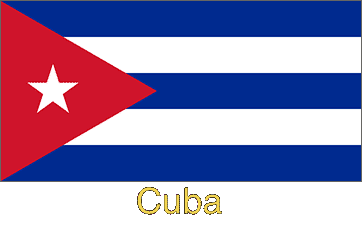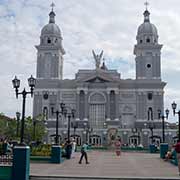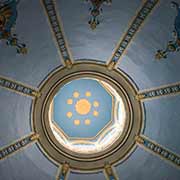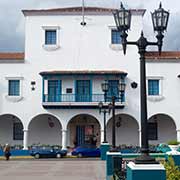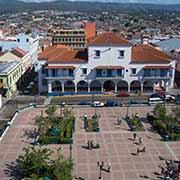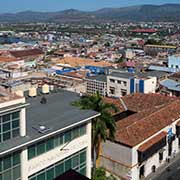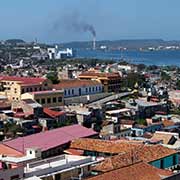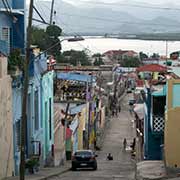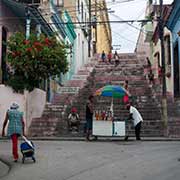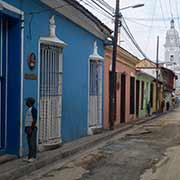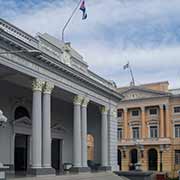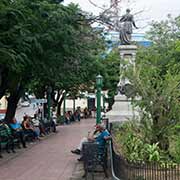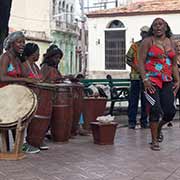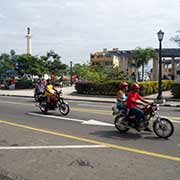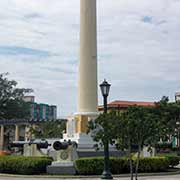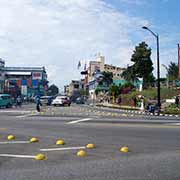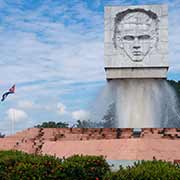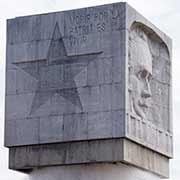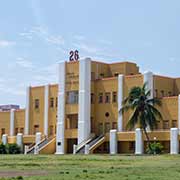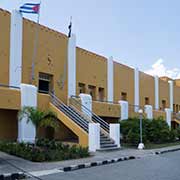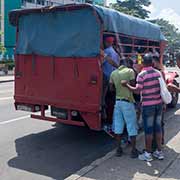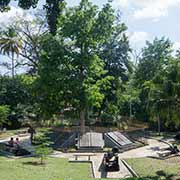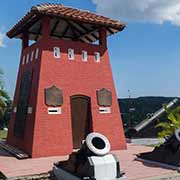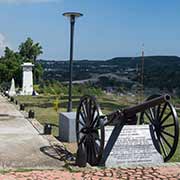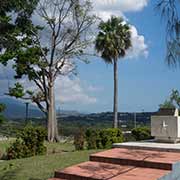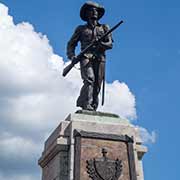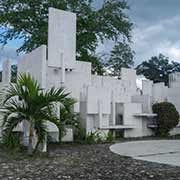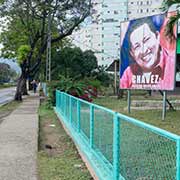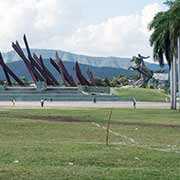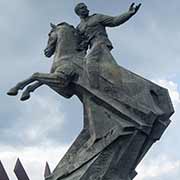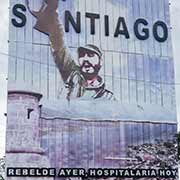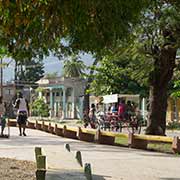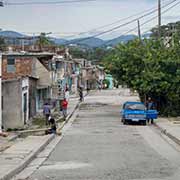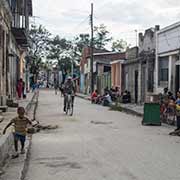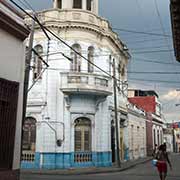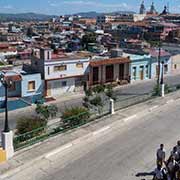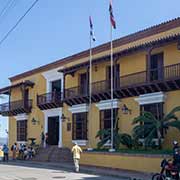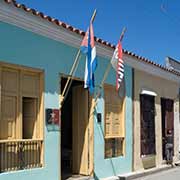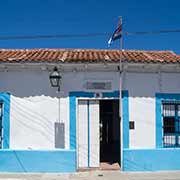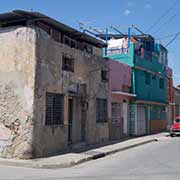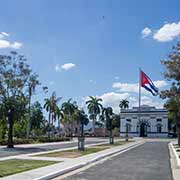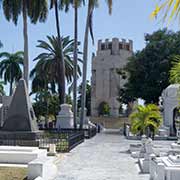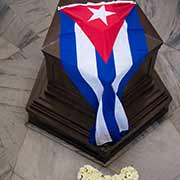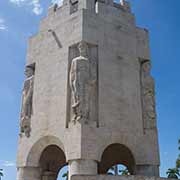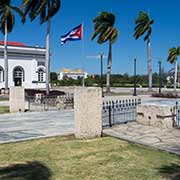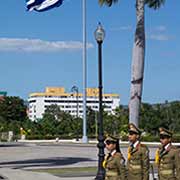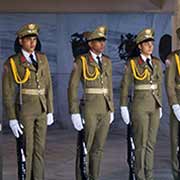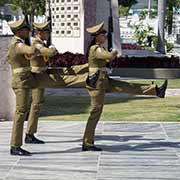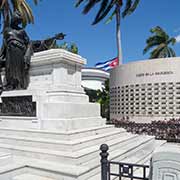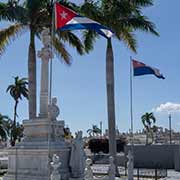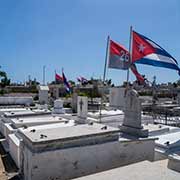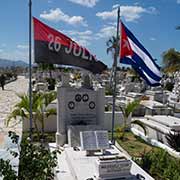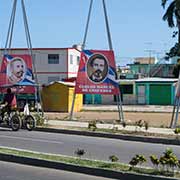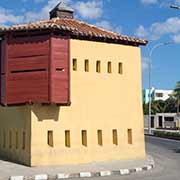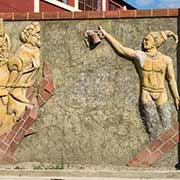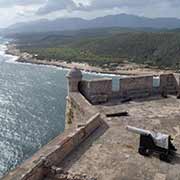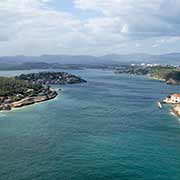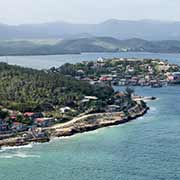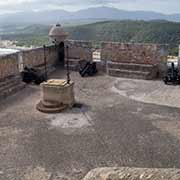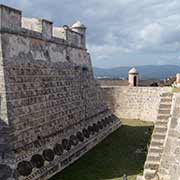Photos of Santiago de Cuba, the second-largest Cuban city, Cuba
Santiago de Cuba, the second-largest Cuban city
Santiago de Cuba is the second-largest city of Cuba and the capital of the Province of the same name, about 870 kilometres southeast of Havana. It was the fifth village founded by Spanish conquistador Diego Velázquez de Cuéllar on 25 July 1515. The settlement burned down in 1516 but was immediately rebuilt. From 1522 until 1589, Santiago was the capital of the Spanish colony of Cuba, and the first Cathedral was built in 1528. The present Cathedral, in the heart of the city, is built on the same site. Opposite it, the official residence of the island’s first governor, the Casa de Don Diego Velázquez, is still standing; it was built in 1522 and is Cuba’s oldest house.
you may then send it as a postcard if you wish.
Spanish conquest expeditions departed from Santiago: Juan de Grijalba and Hernán Cortés to the coasts of Mexico in 1518 and Hernando de Soto’s expedition to Florida in 1538. The city was plundered by French pirates in 1553 and by British privateers in 1603 and 1662. In the late 18th and early 19th centuries, there was an influx of French and British immigrants, many coming from Haiti after the Haitian slave revolt of 1791, adding to the cultural mix. And it is here, at San Juan Hill on 1 July 1898, during the Spanish–American War, the Spanish troops faced their main defeat and surrendered to the United States two days later.
On 26 July 1953, the Cuban Revolution began with an ill-prepared armed attack on the Moncada Barracks by a small contingent of rebels led by Fidel Castro. Most participants were killed, but Castro’s 26 July Movement became the primary force in overthrowing Batista’s corrupt regime. Fidel Castro proclaimed the victory of the Cuban Revolution from a balcony on Santiago de Cuba’s city hall on 1 January 1959. His ashes are now interred in the Santa Ifigenia Cemetery in Santiago, next to those of the 19th Century Cuban independence hero, José Martí.
Santiago de Cuba is well-known for its cultural life, traditional music, dances and its Carnival. There are also a relatively high number of residents that adhere to Afro-Cuban religions. It is a great place to visit and wander, with its steep streets, colonial buildings with huge windows and crowded balconies in multiple architectural styles, from Baroque to neoclassical. And about 10 kilometres southwest of the centre of the city is the local citadel of San Pedro de la Roca. The fortress is inscribed on the UNESCO World Heritage List as “the most complete, best-preserved example of Spanish-American military architecture, based on Italian and Renaissance design principles”. It was designed in 1637 as a defence against raiding pirates to replace an earlier, smaller fortification built between 1590 and 1610.


